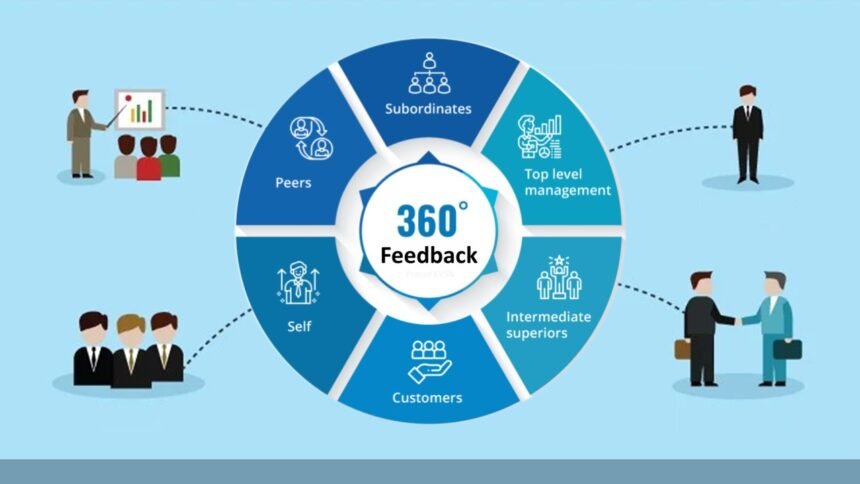In today’s fast-paced and ever-evolving business environment, organizations are constantly looking for ways to enhance employee performance, boost leadership development, and create a more productive workplace. One method that has gained widespread popularity is the use of 360 degree feedback tools. These tools provide a comprehensive approach to performance evaluation, offering insights from various sources to foster growth, accountability, and self-awareness across all levels of an organization.
What is 360 Degree Feedback?
360 degree feedback, also known as multi-rater feedback, is a performance appraisal system where an employee receives confidential and anonymous feedback from multiple sources. This typically includes direct reports, peers, supervisors, and sometimes even customers. In addition to these external viewpoints, the individual also completes a self-assessment, creating a well-rounded picture of their behavior, strengths, and areas for improvement.
Unlike traditional performance reviews that rely solely on a manager’s input, this system promotes transparency and encourages a culture of continuous improvement by incorporating diverse perspectives.
Key Benefits of 360 Degree Feedback Tools
- Improved Self-Awareness
One of the most significant advantages of using 360 degree feedback tools is the increased self-awareness it brings. When individuals see how others perceive their communication, teamwork, leadership, and work ethics, they can better understand their personal impact and identify blind spots.
- Encourages Constructive Conversations
Because feedback comes from multiple sources, it fosters open dialogue and constructive criticism. These insights can drive meaningful discussions during performance reviews or coaching sessions, leading to actionable development plans.
- Supports Leadership Development
Leadership roles often require nuanced interpersonal skills. With 360 degree feedback, current and future leaders receive targeted input on their decision-making, delegation, and team management styles. This type of feedback helps organizations groom high-potential employees for leadership roles with a clear understanding of their growth areas.
- Enhances Accountability and Engagement
When employees know they are being evaluated by more than just their managers, they tend to stay more engaged and responsible in their interactions with team members. This accountability often results in better collaboration, productivity, and a more respectful workplace culture.
- Tailored Development Programs
Insights gathered through feedback tools can help HR teams and managers tailor training and development programs that address specific needs, making them more effective and impactful.
Best Practices for Implementing 360 Feedback
To get the most out of 360 degree feedback tools, companies must approach the process with careful planning and clear communication. Here are some best practices to follow:
- Maintain Confidentiality: Protecting the anonymity of raters is essential. This ensures that feedback remains honest and unbiased.
- Train Participants: Both raters and recipients should understand the purpose of the feedback process and how to give or interpret constructive feedback.
- Focus on Development, Not Evaluation: While it can be tempting to use 360 feedback for performance reviews, its most powerful application is in personal and professional development.
- Act on the Feedback: Collecting feedback without follow-up can harm trust. Organizations should support employees in creating development plans based on their results and offer coaching where needed.
Choosing the Right Tool
The market is filled with various software and platforms claiming to offer effective 360 feedback solutions. When selecting a tool, organizations should consider the following:
- Customization: The tool should allow organizations to tailor questionnaires and reports according to their unique goals.
- User-Friendly Interface: An intuitive platform encourages participation and reduces the learning curve.
- Robust Reporting: Clear, easy-to-read reports with actionable insights make a significant difference in how feedback is utilized.
- Data Security: Ensure the tool adheres to privacy standards and securely handles sensitive employee data.
One highly effective solution is 360 degree feedback tools, which are designed to streamline the entire process—from collecting multi-source feedback to delivering impactful reports that drive real development.
Final Thoughts
Implementing a 360 degree feedback system can be transformative for organizations aiming to enhance employee growth, promote leadership readiness, and cultivate a culture of continuous improvement. When used thoughtfully and with the right tools, it not only boosts individual performance but also contributes to the overall success and health of the organization.
With the right approach, companies can turn feedback into one of their strongest assets—fueling better decisions, stronger teams, and long-term growth.


